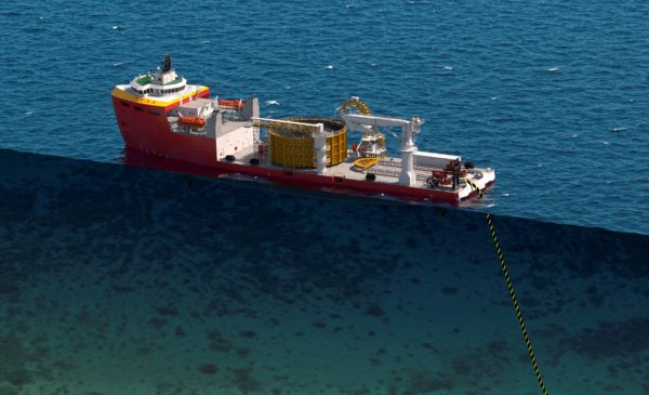Project to build 1.4 GW high-voltage cable linking Germany with the UK moves forward
A rendering of what the 20 GW solar farm would look like as part of the AAPowerLink project. From pv magazine Australia Singapore-based Sun Cable, the company planning on building the world’s biggest solar and battery energy storage project in the Northern Territory (NT) and exporting it to Singapore, has lodged an Environmental Impact Statement (EIS) Summary revealing the full extent of its enormity. According to the EIS, the $30 billion-plus Australia-Asia PowerLink (AAPL), which already has financial support from Australian billionaires Mike Cannon-Brookes and Andrew Forrest, is set to generate its renewable energy via a 17-20 GW solar farm with 36-42 GWh of battery energy storage called the Powell Creek Solar Precinct, occupying 12,000 hectares in the NT’s Barkly region. From the Powell Creek site, an 800 km 6.4 GW overhead transmission line will carry the solar energy to the Darwin Converter Site at Murrumujuk, where approximately 800 MW of it will be supplied to Darwin and for private industry offtake. The rest will push on to Cable Transition Facilities at Gunn Point Beach where up to six 4,200 km subsea cable system laid parallel will transmit the energy to Singapore. The Indonesian government has approved the route for the submarine transmission cable.Image: Sun Cable The document presents the project’s key benefits as being the reduction of greenhouse gas emissions by 480 million tonnes over the project’s 70-year lifespan (equivalent to the average electricity used by more than 2.5 million Australian homes annually, and saving 10% of the NT’s greenhouse gas emissions). Moreover, the megaproject will create 1,750 construction jobs in the NT as well as 350 long-term operational jobs. Sun Cable chief executive David Griffin told the ABC: “The lodgement of the EIS to the NT [Environment Protection Authority] is a significant milestone for the AAPowerLink.” Sun Cable plans to manufacture the Maverick solar array at its Darwin facility. Image: 5B Of course, no megaproject is without potentially negative environmental impacts. The EIS report identified impacts on vulnerable plant species including Darwin Cycads and Typhonium pratermissum at the Converter site. According to the ABC, the project’s proponents said it was unlikely to affect fauna, such as the Greater Bilby, the Yellow-spotted Monitor and eight threatened species of migratory shorebirds. Nor are the cables said to have impacts of extra noise and electromagnetic fields on turtles, dugongs, pygmy blue whales and whale sharks. United States-based engineering, procurement and construction (EPC) giant Bechtel, North American transmission specialist Hatch, professional services firms Marsh and PwC Australia, and Australia-headquartered engineering outfit SMEC, a member of the Singapore-based Surbana Jurong Group, have been listed as members of the project delivery team. The AAPowerLink is the latest in a long line of renewable energy projects SMEC has worked on in Australia. The company said it has been directly involved in the development of more than 6.4 GW worth of utility-scale solar farms in Australia, including Risen Energy’s 100 MW Yarranlea Solar Farm in Queensland and the massive 720 MW New England Solar Farm being developed in New South Wales by UPC/AC Renewables Australia. 



SMEC is also involved in Project EnergyConnect, a 900km proposed electricity interconnector being delivered by network operators TransGrid and ElectraNet and the $4.6 billion Snowy 2.0 pumped hydro project, which when complete will provide 2 GW of dispatchable, on-demand renewable power and approximately 350 GWh of large-scale energy storage to the National Electricity Market (NEM).
Sun Cable believes the project will have the capacity to supply 15% of Singapore’s energy requirements. The financial close of the project is expected in late 2023, with construction beginning as early as 2024. An Indigenous Land Use Agreement is under negotiation with the native title holders through the Northern Land Council.
The EIS is open for public submissions until July 15.


